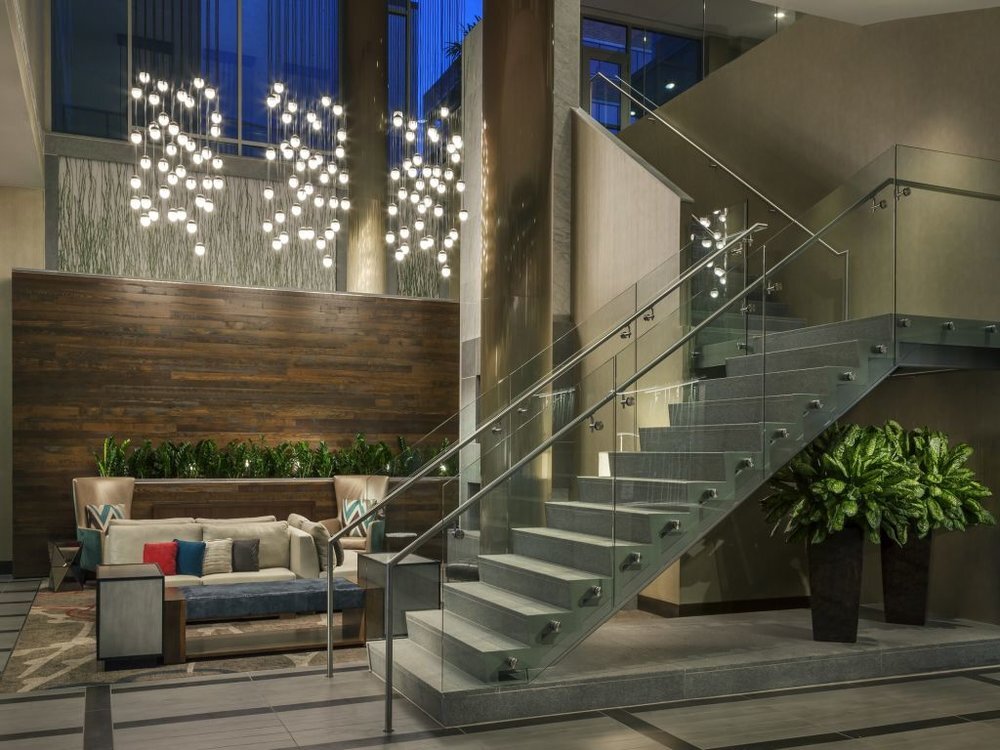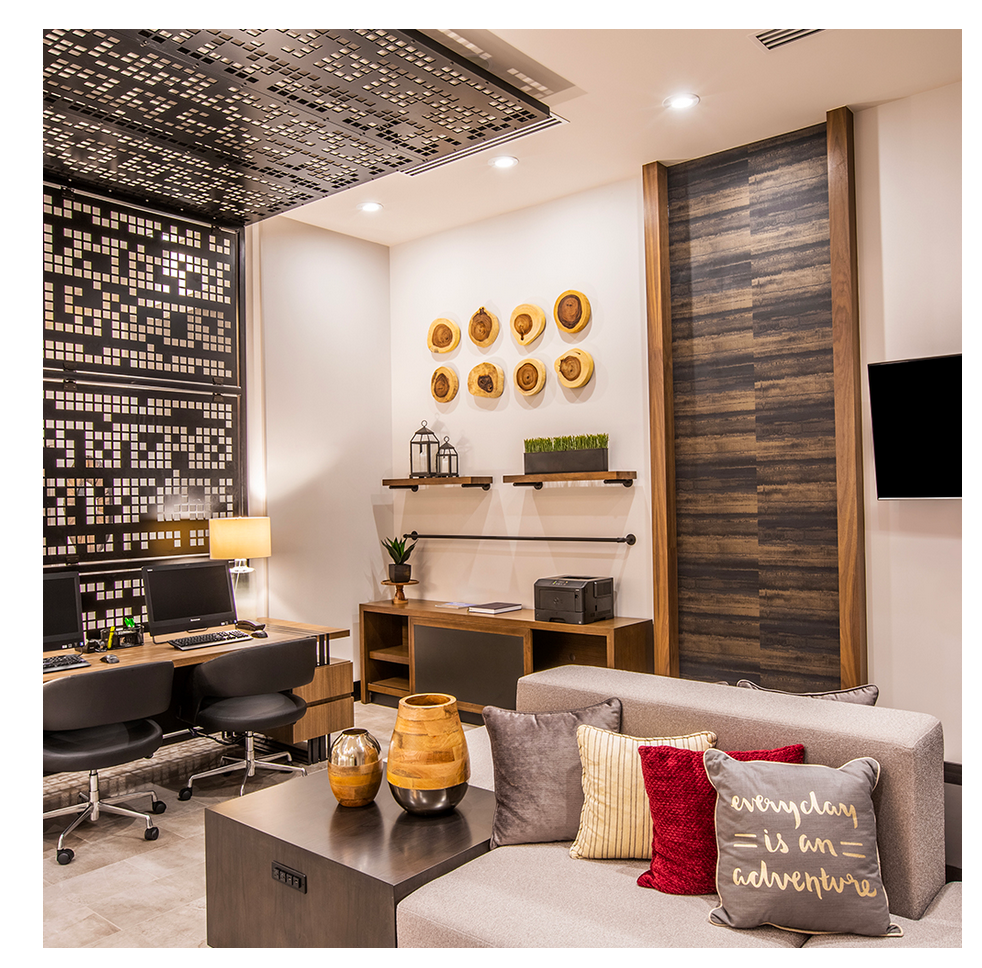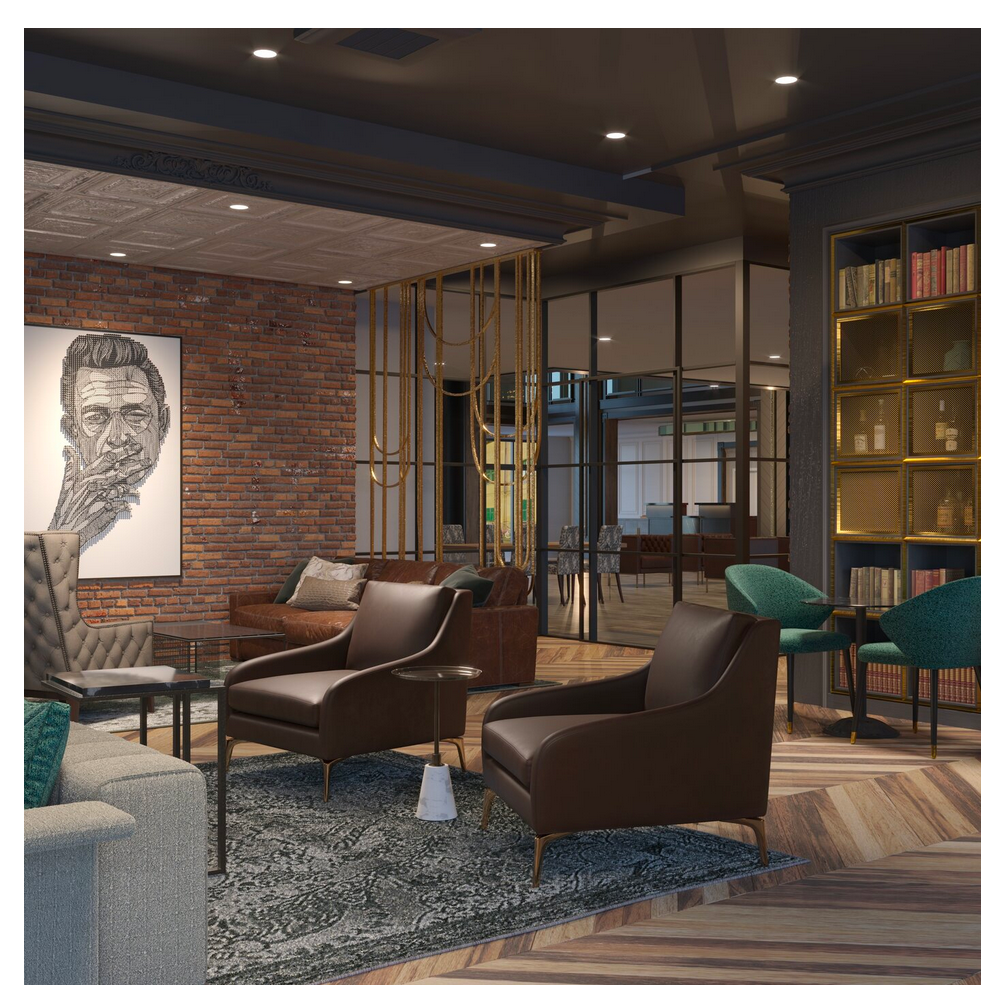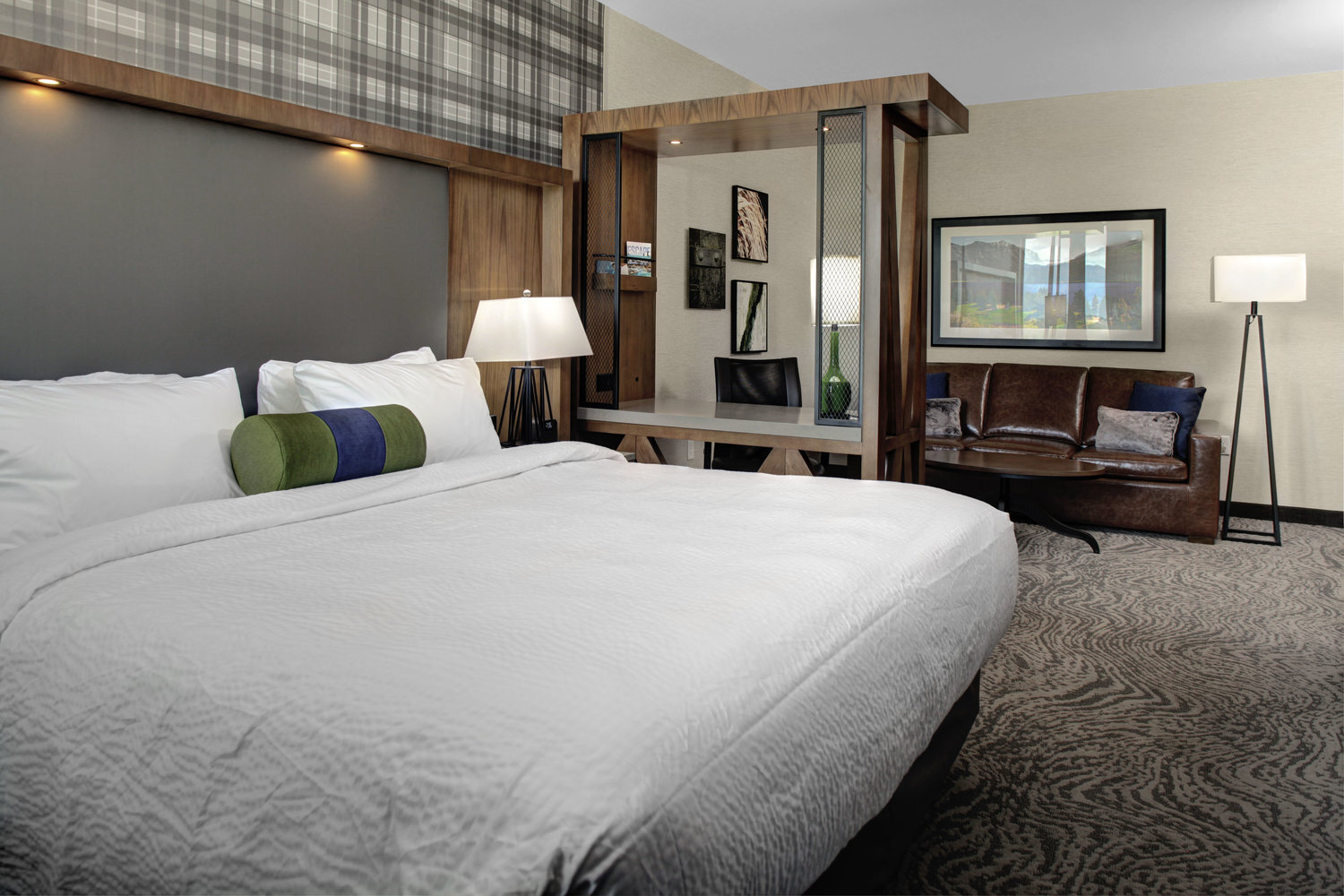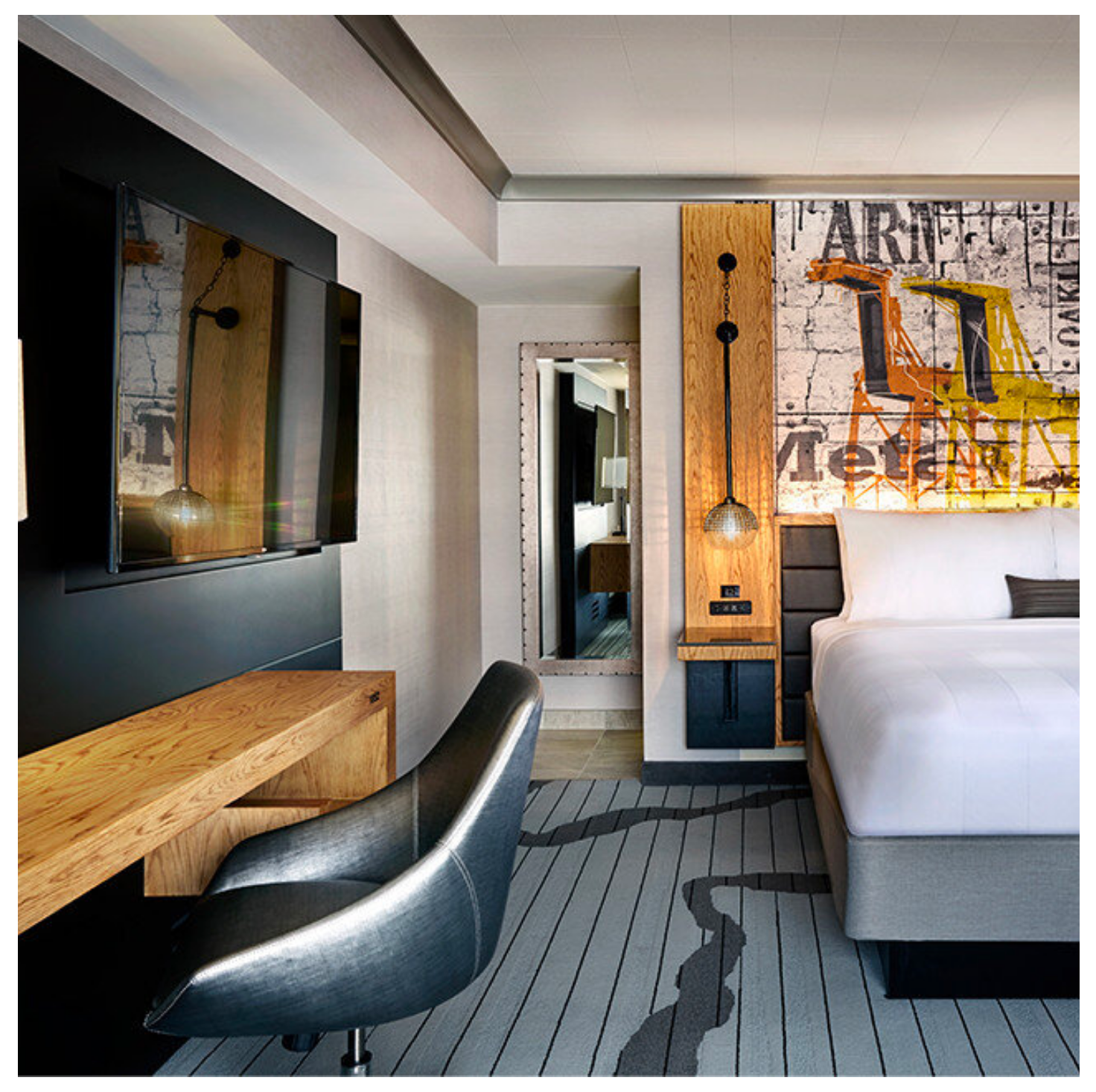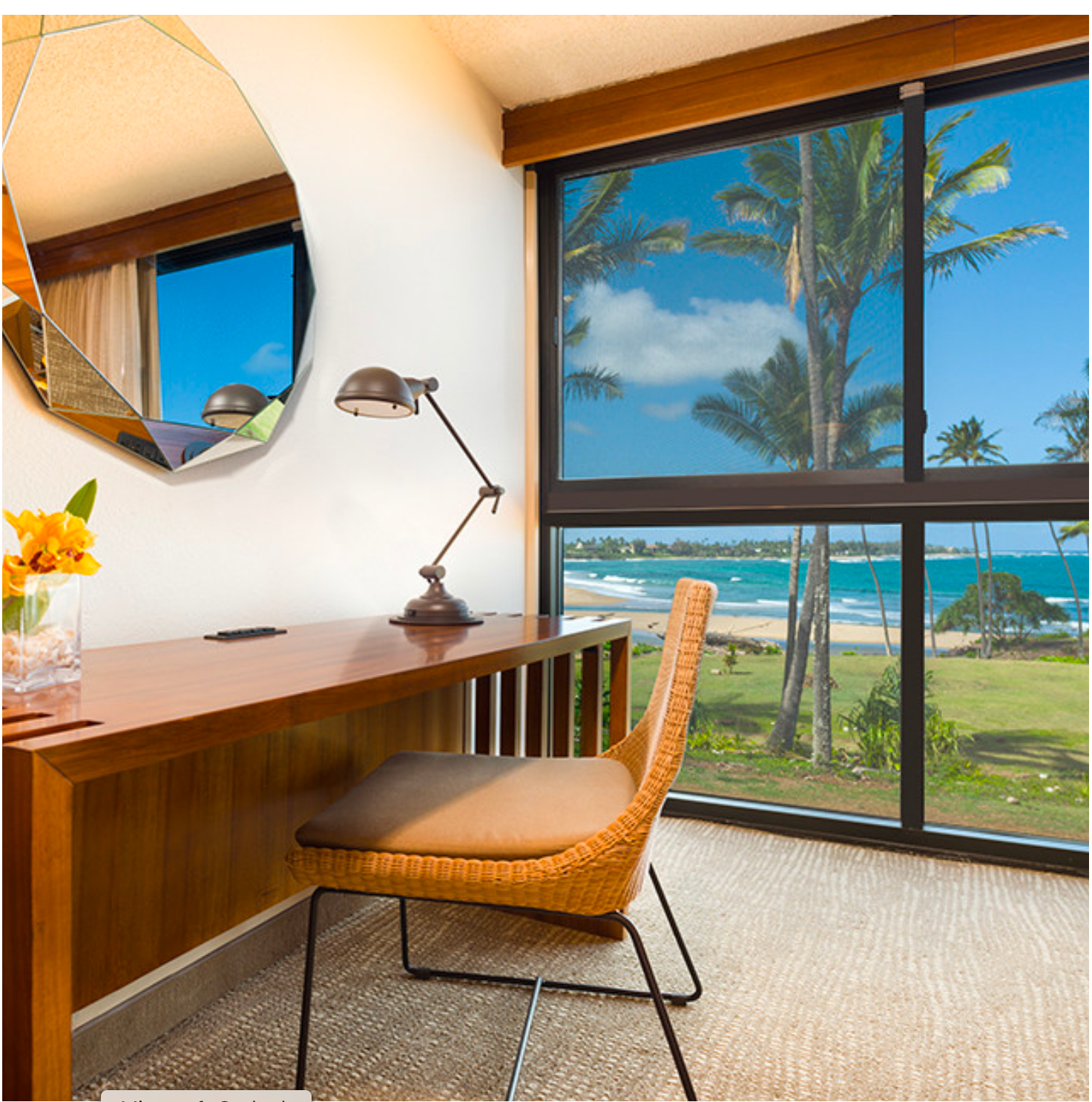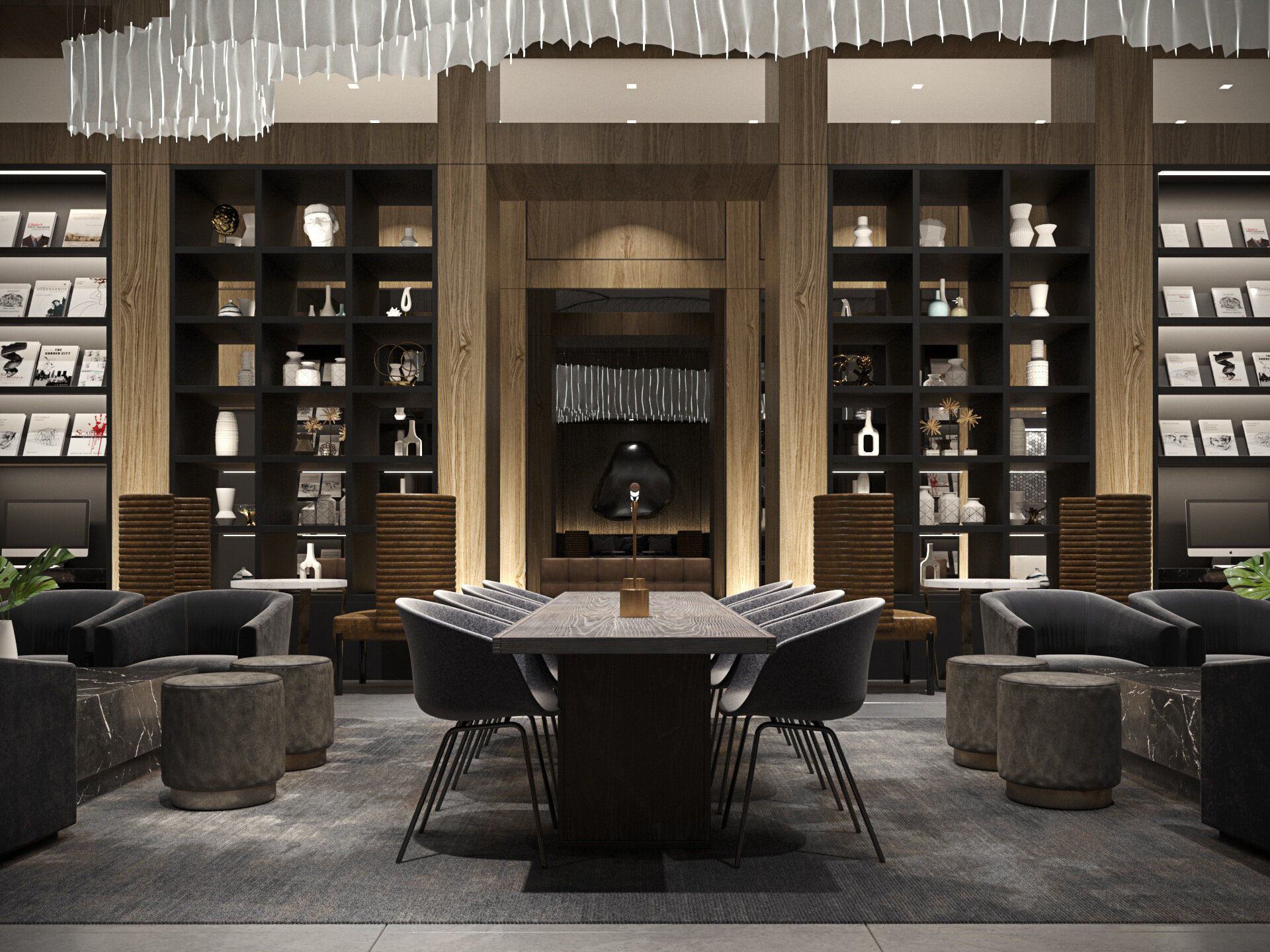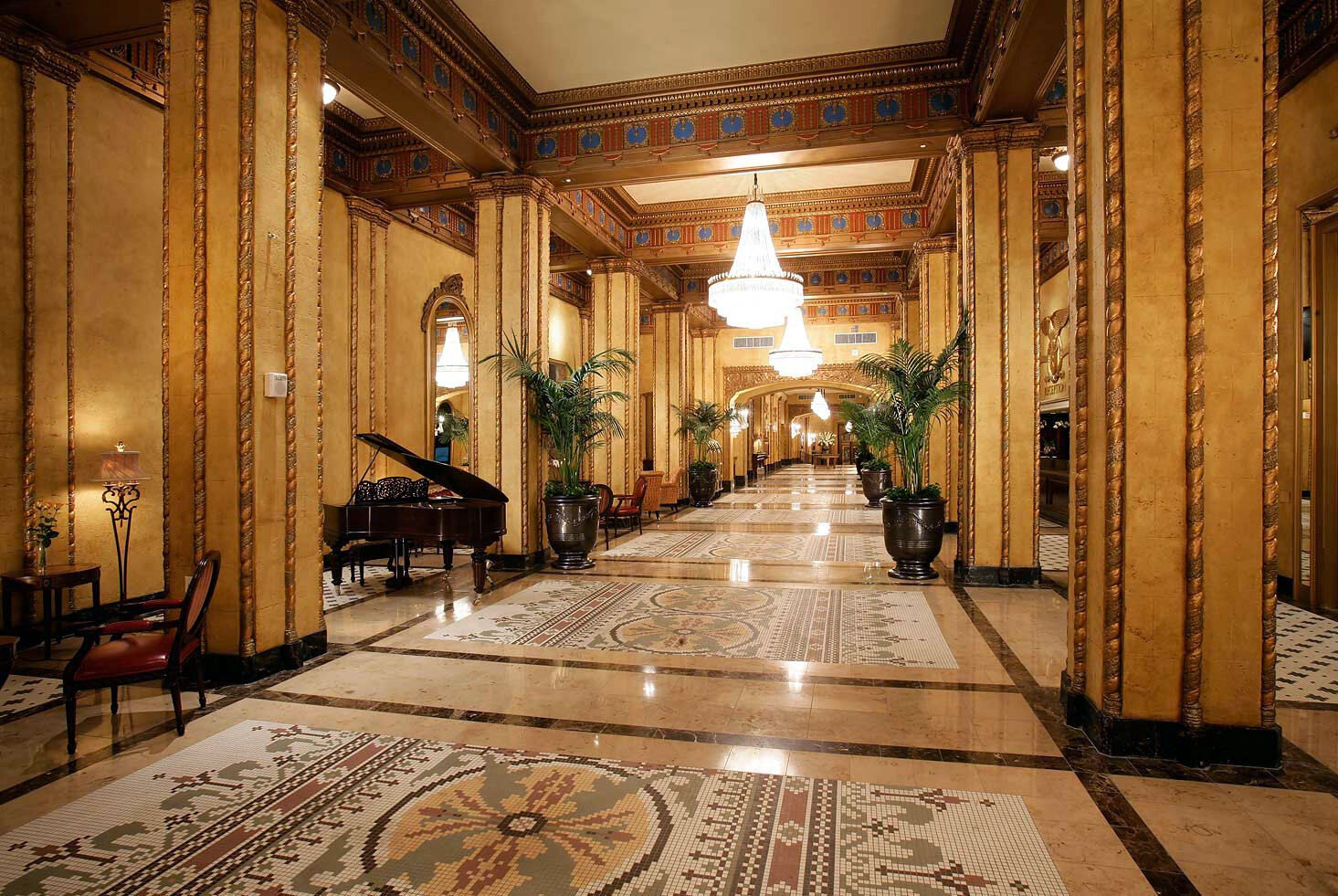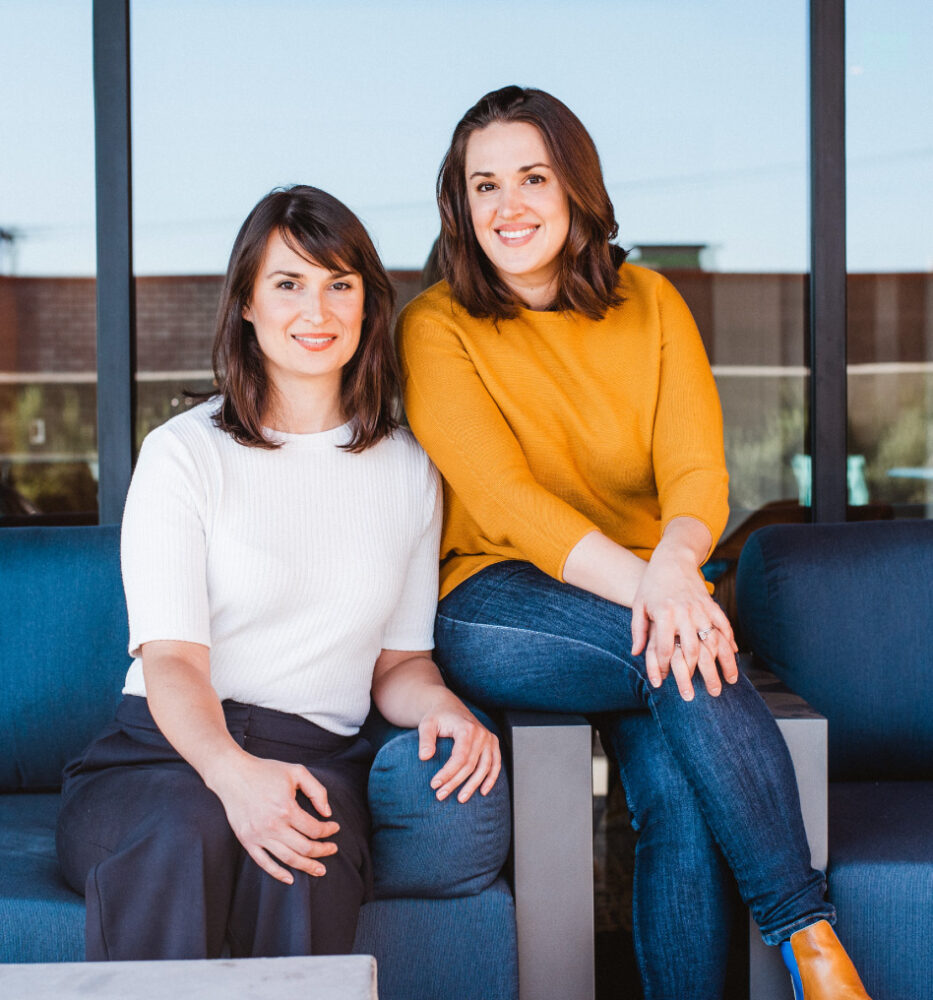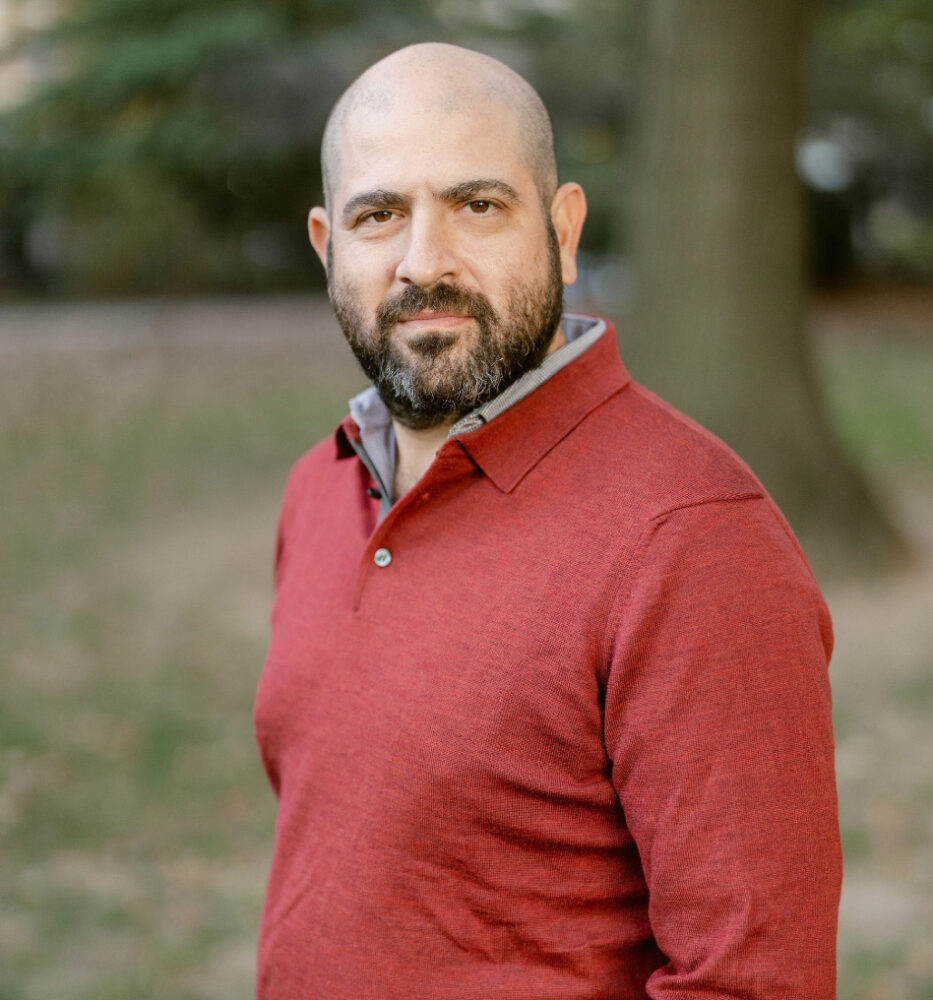Future Hospitality
podcast
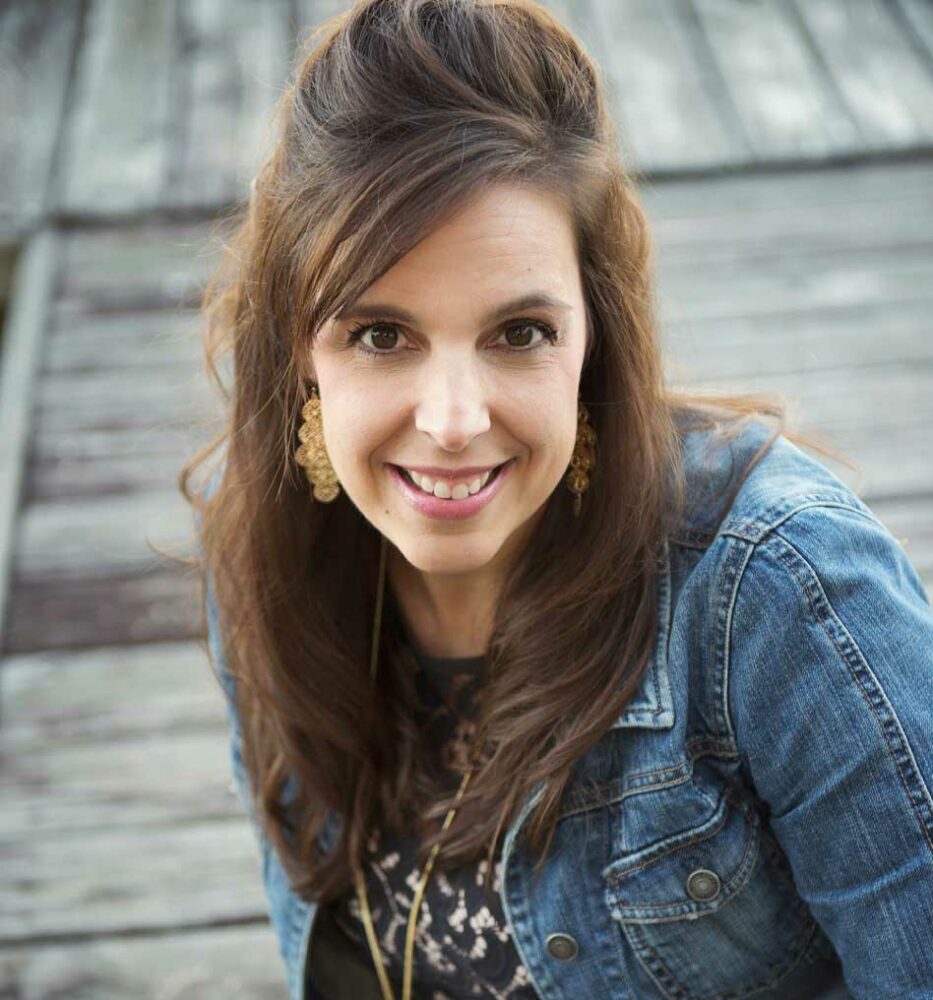
#16: New Ways to Tell Old Stories: Lisa Haude
December 16, 2020
Dustin Myers: Lisa, thank you so much for making the time to chat with us. We’re really excited about this conversation.
Lisa Haude: Great. Thank you. Great to be here today. Thanks for having me.
Dustin Myers: Awesome. Well, we had come across some of your work, some of your interior design work, and we’re just really impressed and wanted to get to know you more, learn more about your team and your process. So just to start out, for those who maybe aren’t familiar with PDG Studios, could you give us a quick background and kind of how you got to where you are at this point?
How it all started
Lisa Haude: Sure. So I started the firm 19 years ago. It’ll be 20 years next September, which is kind of scary to think it through. Right? Yeah, I started in college. I got the bug for hospitality, as you start studying the different disciplines in design. I actually met my mentor in college and did an internship with her and worked for her right out of school and just fell in love with the industry, and I haven’t really looked back since, worked for a couple of different places and then finally got enough courage to kind of go out on my own and start a firm and it’s just been steady growth since then to build the company that it is today. And I think even, especially this year of all years, we’ve seen evolution and I think you learn a lot over time. And as a result, I feel like this year has been kind of a launching pad of just switching again a little bit, like you change it up a little bit. I mean, the core principles are always there of who you are and what you do, but how you are able to do it and get it out and all of that changes a little bit. And we’ve all had to adjust a little to stay at home and working from home and working from a team environment that’s a little bit different than what we normally would do. But it’s all about adapting and it’s been a fun journey. So yeah, we’re still here and we love it.
It’s all about adapting and it’s been a fun journey… We’re still here and we love it.
Jeremy Wells: Yeah, I think we’ve all kind of everyone in the industry and pretty much throughout the world has kind of had to adapt and adjust and pivot in a lot of different ways during this time.
Lisa Haude: Yeah.
Jeremy Wells: Over the past few months, I mean, what are some ways or changes or things you’ve had to adjust in your own business or just in the way that you work as you’re serving your clients and you’re helping these projects go through?
Adjusting to the ‘New Normal’
Lisa Haude: So the biggest thing that’s changed obviously is we’re not necessarily going in our office space anymore. Everyone’s kind of adjusted to working from home. With the stay-at-home orders, obviously we all packed up and whatever projects you had, you brought that project box home with you as well as your computer and your printer and all these things. So that part was a little bit different and the fact that we weren’t physically in the building anymore and able to touch, feel, see each other on a daily basis. But we quickly adapted. And I think I’m really fortunate. I have this amazing team that adapted really well to the process. And we were already kind of used to doing FaceTime calls and we’re constantly in conversation with one another, but we just kind of rolled with it.
We switched some of our programs around that we were using. We were already on the cloud with all of our software and everything. So that wasn’t any different than what we do. I mean, we live in Houston, so we have to be able to adapt if there’s a hurricane or a power outage, so we can adjust. But the other part was just kind of getting used to designing a little bit differently. And now we do teams calls for collaboration on drawings and such and we’ve actually found that it’s worked out even better than it was when we were in the office, kind of funny. And then when it comes to us actually doing design selections and what have you, again, it’s a lot of FaceTime and collaboration on teams and we’ve implemented a new software program that we’re using for project management that I’m in love with.
They jokingly say it was built for me because I’m a list person, but I’m like a person that likes to put post-it notes all over everything and once it’s done, you rip the post-it note off. And so we jokingly say that this is built for my brain because I can tick off the boxes and assign things to it and it’s been great.
So that’s been the biggest thing. but like I said, we’ve kind of rolled with the punches and kept going. A lot of our work is all over the US so we’re already kind of used to doing conference calls with our clients. The other thing that we weren’t necessarily doing is going to the job sites as much because obviously we couldn’t really travel as freely as we would have been. So we did a lot of FaceTime calls with contractors, which that’s kind of interesting in itself at times. But I think everyone’s just kind of rolled with it and just made it work. And then we hadn’t really skipped a beat, which has been awesome. Yeah.
Jeremy Wells: Yeah. So it sounds like you guys, your team is a pretty collaborative kind of close-knit team. How would you describe the type of team culture you’re trying to develop a PDG and how has that maybe been affected for the good or for the bad over the last few months?
We feel everybody has a voice and we should use it, everyone’s able to throw ideas out on the table and we talk through it.
Lisa Haude: If anything has gotten better, I would say, again, we believe really strongly in collaboration. We feel everybody has a voice and we should use it, everyone’s able to throw ideas out on the table and we talk through it. I don’t sleep well sometimes. So I’m notorious for searching for things in the middle of the night and then their inbox gets a little flooded in the morning. But we’ll get on that call in the morning and kind of go through it as we’re brainstorming concepts and ideas and all of that. Yeah, we do a lot of laughter and joy and communication and we try to have like a fun call once a week with the team where we do just a little team-building things through Zoom calls, have a scavenger hunt in your house or crazy little games that we do. Just lots of laughter and fun and just being ourselves. And of course so we can squeeze in dark chocolate and wine every once in a while, we will.
Dustin Myers: That’s a great idea.
Lisa Haude: Yeah. I think it really is a situation where we’re all just very like-minded people. We just love what we do. I mean, obviously, there are days are more challenging than others. Sometimes with deadlines or some crazy thing that happens at the job site that you have to scramble and figure out how to fix quickly or whatever. But for the most part, I’m really fortunate. I have an amazing group of girls that I work with and we enjoy what we do and we respect one another and we just really love working together and have a lot of respect for each other. Nothing is a silly question. Nothing is a silly idea. We throw it all out on the table and brainstorm and think it through and figure it out. And yeah, everyone has their different strengths and weaknesses and somehow it all works together and makes a great team.
Nothing is a silly question. Nothing is a silly idea. We throw it all out on the table and brainstorm and think it through and figure it out.
Dustin Myers: Yeah. I love some of those ideas and practical ways that you develop your team. I feel like teams that are truly connected and going in the same direction, you can see that in the work that comes out, just like the laughter and the joy that you mentioned. I think it’s apparent when you see really good outcomes that there’s a cohesive team behind that.
Lisa Haude: Right. Right. And I’m not going to say we’re perfect because we are not, I mean, just like a family dynamic, right? You have good days and bad days. But at the end of the day, I believe core values of and even who I am. Right? And it’s like I believe that you have to live your life with grace and compassion and be authentic and honest and fair. And I treat my team the same way. The way I treat my daughter, the way I treat my friends, it’s all the same. That’s kind of the core value I would say or a foundation point to the company.
I think everyone kind of had a deer in a headlight moment and I was just very honest with them and I was transparent with them and together, I was like, “We’re going to figure this out, but give us all some grace and compassion and we’ll work together and we’ll get to the other side.”
I think that comes through, even in our day to day and how we work together. I believe in being transparent with them. When we started into the pandemic, it was scary for everybody. I mean, there is no ifs and buts about it. I think everyone kind of had a deer in a headlight moment and I was just very honest with them and I was transparent with them and together, I was like, “We’re going to figure this out, but give us all some grace and compassion and we’ll work together and we’ll get to the other side.” And we have, and it’s been a really interesting period of time. But if anything, I think it made us even as a team stronger because you are forced to work together a little bit differently than you would have before.
I think it also gives a different level of respect for everybody because it’s not like you’re looking at it going, “Oh, the boss is so disconnected and just immediately wants everybody in the chopping block to save the dollars,” or whatever. And that was not the case. The case was, “How do we work together? How do we get to this other side? These are the facts, and this is what I’m thinking. Do you guys have any ideas or thoughts that differ from that? But this is kind of the direction I’m heading and I’ve done the research and I spoke to with the consultants and whatever it might be.” I think they, in the end, have been very responsive of that. And I think also appreciated the fact that there was transparency to it. Nothing was hidden.
Sometimes the best way to do the analogy, I guess, is when you have a child. Some things you tell your child, other things you don’t, but you don’t sugar coat it. Right? Sometimes you don’t give them every little detail, but they at least know the basics. And I think that there’s just a different bond that comes out of that. So like I said, I’m just really thankful I had the team that I have and they’ve been really great. And the same with our clients. They’ve been really awesome to work with during this process. So yeah, just get to the other side.
Dustin Myers: Yeah. That’s awesome. So from a work perspective, what’s your mindset? What are your main goals and influences when you take on a new project? What are some of your goals and kind of methodologies behind making each project unique and standing out as PDG?
“Every project we do has a unique story that needs to be told.”
Lisa Haude: Well, I think one of the biggest takeaways is that we believe or I believe very strongly that every project we do has a unique story that needs to be told. I love everything in the design process, but one of my favorite parts of the design process is in the beginning when you’re figuring it out, what is that story? I love doing the research and I love kind of digging deep into that location, the culture, the history of the building or unique little things that are in that city or in that region. And then it becomes this mission of, “Okay, well, how do we now incorporate and create this story? And what does that look like? And then how does that come out into the design and what are those components that go with it?”
So I think that it’s all about details and creativity and just putting that all together. And I think something that you see as a consistent little nugget in all of our projects is that unique kind of boutique-y feel, like it’s very residential and homey feeling, but yet it’s in the hospitality setting. And it’s comfortable and it’s engaging and it’s inviting and it makes you want to linger and it makes you want to come back and stay. And I think that is something that is unique for our firm and that we do really well. Even if you look at some of our projects as we more and more keep getting rolled out, you’re starting to see more and more of that uniqueness coming through, which again, like you said earlier, it goes back to that cohesiveness in your team. You’re all working together and putting several heads together. It makes all the difference in the world of coming up with a great outcome.
Jeremy Wells: Yeah. Yeah. That’s really cool. And then looking at your portfolio and the work that you’ve done, it’s definitely apparent that you guys are really just knocking it out of the park with that boutique like always been lived in type of a vibe for these properties you’re helping. I’d be curious to know like maybe some examples of how you’ve kind of integrated this approach and this methodology in a successful way for a property. And then also, I’d be curious, early in your career and as you are kind of going through the grind of being a new designer in a new field, out of college or whatever, what were some lessons that you learned the hard way to get to this point where you now have this dialed in? You guys are doing amazing work now, but I’m sure it took some difficult times to get to that point.
Lessons Learned
Lisa Haude: Yeah. So lessons learned. It’s so funny you say that. I think we’re always learning every day, but even with my own team, we had this conversation just this week about a lesson that one of my teammates learn. I think the thing is that we’re all human and realistically errors are going to happen. And whether it might be a small error and easy to fix and easy to catch before it goes into implementation or sometimes you don’t catch it until it’s been implemented and then you have to kind of figure out how to do it. But we’re human. And I will tell you, if you ever make a mistake, you probably aren’t going to forget the error that you made.
I will tell you, if you ever make a mistake, you probably aren’t going to forget the error that you made.
In the past, I had a designer one time completely specify the wrong size piece of art that was going into every single guestroom and it was a problem. And I can assure you, she never forgot, again, ever to double-check drawings before an art went in a room because that was not an error that was ever made again. But it seems like that. Even when I was a young designer, I made errors. You have furniture that’s not quite right, dimension wise or seat type that’s off or like I said, a piece of art that doesn’t quite fit. And sometimes you can joke about it afterwards and other times you’re like, “Oh, wow! That was a really big mistake.” And we got to fix that. BUT once you’ve done it once, you typically don’t do it again. You kind of learn from that as a lesson learned and go from there.
So early on, that was something I learned and every young designer I think learns it. The other part of that is you’re human and it’s going to happen. And when you do make the mistake, you own up to it. You don’t sugarcoat it and try to brush underneath the covers. It’s kind of like, “Nope, we made the error and now we got to help you figure out how to resolve the error.” So there’s that part of it. And I think that when I started the firm, obviously when it first began, it was myself as a single designer. So if there were any errors being made, it was my own darn fault. And then like I said, as you go with time and evolve and you hire other people, there are sometimes younger staff members and things happen and things get missed or whatever, but that’s part of my job too is to mentor and to teach and to review and have safeguards in place to try to catch those types of things so they don’t happen. So I guess that answer is probably the one question.
Jeremy Wells: Yeah. Fast forward now to recent years and you have a pretty well-oiled machine and like you said, we’re always learning lessons every day, but what are some ways that you’ve recently in recent years found success and telling these unique stories and solving these problems for your clients?
Lisa Haude: So I think part of it is you have to sometimes have that open mind and creativity. Probably one of the biggest things we run into is we’re creative people, so we’re going to always think outside the box a little bit, and then we have to get even more creative when the budget hits and you go, “Oh wait, we can’t afford all these things,” or that’s coming in way more expensive than we thought it would be, then we really have to get creative to figure out how do we still get that design intent that we wanted but at an affordable rate because not everybody has that open checkbook.
And so I think, again, it just goes back to being open to suggestions, working with your team and your team not being just internally the PDG’s team, but also incorporating the contractor and the consultants and the owner because we’re all going to bring different things to the table and different suggestions and we are all trying to get to the same end of a finish line. I also think too that, personally, I feel like as a designer, we don’t need to carry an ego with us and we just need to be, again, open and honest and open to ideas. I by far, I’m not an expert in all of these fields. I’ve learned a lot over the years, just working with contractors and the workers and cabinetry people and carpenters.
Again, you might have this really great, fabulous idea of this intricate detail that you want above the bar. And they’re like, “Yeah, that’s not going to happen because of this, this, and this.” So you have to work together to figure out how to make that happen and still get the design intent you want. Again, I think that’s where just over years you just learn to trust that it takes a village to build these buildings and to finish these spaces out. While we might be one little component of it and maybe an important component of it, so are so many others that do it as well. And together, we all make that boutique feel in the end. We have the vision and all of that that we have to work together to figure out how to implement.
Sometimes you really have to stretch to get creative on how to make it all happen.
And sometimes you really have to stretch to get creative on how to make it all happen. We did a job in Hawaii and the island it was on, I mean, the only option we had was the local Lowe’s and a Costco literally, and that was it. So every single piece of furniture and millwork right down to the bar itself was built. We didn’t have any local craftsmen that could build any of that. And it was difficult to pay for some of these specialty trades to go over there and just work onsite and build it on site like we normally would anywhere else. And so that particular project, we built all of it actually in LA with a fabricator and then put it on a boat, sent it over, and then they sent one or two people over to basically assemble the kit apart at the property.
And you can already guess there’s going to be its own little sets of issues and problems that go with it because if the dimension is not quite right or the field condition is not quite what you thought it was going to be, even though you’ve measured it 52 times, you had to kind of adjust in the field and you kind of had to MacGyver a few things, again, when you only have Costco and the local Lowe’s with limited stuff to work with. It became a little challenging at times, but we made it through and it turned out to be a great property and the millwork was beautiful when it was finished, but it definitely was one of those. It took a village to make that one happened. That was great.
Again, I think that’s part of our job. We just have to learn how to adapt and adjust and be willing to make suggestions or compromises in areas at times because things happen. All different situations occur and you just go with the flow.
Dustin Myers: Yeah, for sure. As you talk about your process, there’s a lot of similarities in what we do as a branding agency, just starting with the story and figuring out what are you trying to communicate and then starting to piece together different design ideas and solutions that are going to kind of carry that through and achieve the end goal, the hospitality industry and projects, there’s a lot of moving parts, a lot of stakeholders, a lot of different opinions. What are some of the ways that you have or I guess what are some good examples of times when projects all came together and the final vision came to pass in the way that you hoped? Are there some times that maybe there was conflict or disjointed visions and kind of how did you navigate that?
Lisa Haude: Wow! That’s really great question. So disjointed, I think that comes to play if an owner is not an owner or a brand, let’s say, is not necessarily in alignment with the direction we’re heading. We’ve had a few projects that have kind of fallen into that category. Ownership has one idea and maybe they’re not being very clear in that communication to the rest of the team. So therefore, you’re going to have problems, right? It’s not going to be a nice fluid process. And the same sometimes happens with the brand. We, as in design team and ownership might be united in the direction we’re heading, but maybe the brand thinks it’s a little different direction and they might be a little bit more forceful with what they’re wanting and where they’re going or what they’re wanting it to go in that direction or whatever. And so there’s more redesign and adjustments that happen.
I think, again, it kind of goes back to some of the core principles that I talked about earlier. For us, I believe in listening to everybody’s opinions and listening to their voice. And when it makes sense, you implement accordingly. And sometimes you have to kind put your ego to the side and you have to put your feelings sometimes to the side because it’s not a personal attack on you. It truly is you guys are just trying to work together to figure out what is that end result that we’re wanting and how do we get there. And I tell my team that all the time too, like, even if I’m doing critique on a presentation they’re making to me, I was like, “Guys, I’m not attacking you.” And like, “Yes, maybe you love that purple polka dotted fabric, but the reality is it doesn’t work for this situation and here’s why. So let’s maybe go reevaluate and pick this, this, and this instead.” And it’s the same way. I think you just have to be open to those suggestions. And if there is something that you feel very strongly about, that is an integral part of the design, then maybe I’ll push a little harder on trying to get that one particular element through, but then I maybe will compromise somewhere else because it’s not as important in that regard on whatever it might be. And sometimes you just kind of have to adjust the vision a little bit as you’re moving forward.
But again, I don’t believe being confrontational and ugly and mean. I’m going to sit there and listen to that person’s wishes and desires and then you just adjust accordingly. Just because I came out with, I dreamed up this idea or this vision or my team dreams up this vision for the property but you’re not totally sold on, it doesn’t mean that we’re going to keep trying to push that down your throat. We’re going to listen to what you’re wanting, what your thoughts are, and then we adjust accordingly. And if that means we have to redesign something, we redesign that thing because we want everybody to be happy with the outcome.
So that’s kind of how I approach it, whether that’s right or wrong, I don’t know. But that’s kind of how we do things and I think that many times we’re really lucky and fortunate that we’ve listened well enough or we’ve heard, we’ve asked all the right questions in those preliminary meetings that when we come into that first meeting of our concept and our mood pages that we’ve pretty much hit it out of the park and we’ve gotten it, what they want it to be and where it should be going. There might be a tweak here and there, but it’s not completely off base or they’re like, “Yep. We liked the vision you’re going with and this is great.” But again, it’s a fluid process and I think being open to suggestions and commentary is important. And that’s part of the process.
Jeremy Wells: Lisa, kind of shifting gears here, looking forward to the future of the industry. I know a lot of people, I’m sure you guys are just kind of wondering what the recovery will continue to look like and how long it will take and what it’ll look like when it’s all said and done. The pandemic has done a number on our industry in a lot of different ways. As it relates to what you guys do with interior design and how are you guys are solving these problems, how do you foresee the future of what you do changing, different considerations you need to make, or different ideas that need to be presented to guests and to ownership and things like that?
The Future of the Industry
Lisa Haude: Well, we definitely all have been impacted. It’s incredibly humbling and sad to see how bad we’ve been impacted. Right? I mean, there are firms that have closed doors and companies that have closed doors that will never come back, which is really sad. And others of us that are hanging on by our fingertips, but we’re still here. I think that moving forward, it’s probably going to still be a little bit of a bumpy road for a while. You’re probably going to have ebbs and flows a little bit. As you know, this virus still kind of moves around the world and probably will until we kind of get a vaccine and normalcy, whatever you want to call normal anymore, put in place.
But with that being said, people are starting to get out again and travel. I heard the other day that this past weekend was like the biggest number they’d had going through the airports since like February in one weekend. People are starting to move. People are wanting to get out and do things, and obviously within safety zones, but I think that everyone’s just wanting to move on and embrace, this is what life is today. And so how do we adjust and keep adapting and move forward?
I think as designers, we are challenged a little bit more in the designs that we are doing now
I think as designers, we are challenged a little bit more in the designs that we are doing now or in the products we are specifying and that we need to make sure people feel and understand that the product is clean and safe and not harboring germs or holding a virus in it or whatever. So I think the selections were making like fabrics, are they easy to clean? Are they bleachable? Do they hold a germ or whatever it might be? I mean, luckily, technology has moved so much further forward when it comes to fabrics, that things automatically have some sort of a sanitary side to it. It used to be just in healthcare, but it’s rolled over into hospitality now and it keeps getting better and better every single day.
The same with what are the products we’re using, using quartz and using natural materials and surfaces that are easy to clean, just helps reassure to the guests in that environment that what they’re touching is not harboring germs sitting on that surface for a longer period of time and just kind of thinking through that process a little bit. The same with when we’re laying out spaces now. Everyone is socially distance, so we’re not necessarily spacing every single chair, six feet apart, because that would be a pretty sparse little lobby. So just being very thoughtful with how we are laying the space out, providing maybe more zones of areas or intimate seating spots so that if you are a small little group of two or four people, it’s easy for you to kind of huddle in your little area and then you’re still distanced from maybe somebody else that’s in the adjacent area.
So I think just kind of working through those components is important and something that we just kind of keep implementing into all of our designs and we’ll just keep adjusting. Every day I think it changes a little bit more and we just have to adjust accordingly. I mean, just like schools are having to adjust and everywhere else that we touch feel and see, right? Everyone’s just kind of adapting to a new criteria and eventually it’ll just become normal again.
Dustin Myers: Yup, absolutely. We’re all just kind of figuring it out as we go and making adjustments. Like you said, it does seem like people are getting more comfortable moving around and receiving some normalcy. So that’s really nice.
Lisa Haude: Right. Yeah. And I even see with my own daughter. It’s kind of funny, kids, they go to school, like my daughter, she wears her mask and she goes to school and all of that. And it’s one of those things where choosing to think twice about it. She would grab the mask, walks out the door, puts it on her face, she’s good to go. We, as the adults, they’re probably kicking and screaming a little bit more about wearing the mask at times. But for them, it’s normal now. Like they don’t think twice about it. They just put it on and go on with their merry day and they don’t complain about it and it just is what it is.
It’s all about being open to adapting
So I think it’s all about being open to adapting and just like if you think back, the industrial revolution when it happened and all of that, there were definitely times when, I’m sure those people resisted change as well, I think about major changes happened when suddenly people had light bulbs and indoor plumbing and all these other things that happened. Right? And so that was a big adjustment and we’re kind of doing the same thing. This is our own version of the industrial revolution to some extent and we’re being forced to adapt and adjust and change to whatever the new norm is going to be. It’s scary, but it’s good. You know?
Dustin Myers: Yeah, absolutely. Well, as with the title of this podcast, Future Hospitality, we always ask our last question. What are you personally excited about as you look to the future? I know 2021 is kind of a major reset, refresh year for a lot of people, a lot of businesses. What are you excited about as you look to the future?
Lisa Haude: Well, I’m excited for a vaccine to come about for people to not be sick all the time. Right? That would be great. It’s been really sad and humbling to see all that’s happened in a year. I’m excited to see how hospitality is going to continue to evolve and adjust for all of this, right? And how we are going to continue to adapt with technology and what does that look like and how we all just kind of embrace and move forward. I don’t know that we’re ever, well, who knows? Maybe we’re going to have a life like the Jetsons where we have a robot named Rosie and everything is automated and all of that. Who knows?
Dustin Myers: That would be awesome.
Lisa Haude: It would be awesome. Right? I could totally have a Rosie in my house right now. It’d be awesome. But yeah. Again, just when you kind of think back and reflect a little bit, even in the past two years how much something has changed, right? Alexa is everywhere. Everything is automated with a smart house and all of those things. And it’s all moving so fast moving forward. And it’ll be interesting to see, again, a year from now what does that look like.
I think the future in hospitality is going to be something we probably can’t even imagine right now, but I think it’s going to be amazing
So I think the future in hospitality is going to be something we probably can’t even imagine right now, but I think it’s going to be amazing. And I think that there are also a lot of people who probably have spent this past year kind of reflecting and thinking about how to make things better than they were before and are challenging all of us to even one-up it a little bit. Right? And I also think the future is going to be us being a little bit more adaptive and probably a little bit more intentional with whatever decisions we’re making. Right?
I know for me, I think when all this happens, I became a little bit more intentional with how much time I was working and when I was actually pregnant with my daughter and what we were doing and how we were doing it. And sometimes it didn’t necessarily mean we needed to hurry up and go somewhere to go do something. Sometimes just sitting and playing a game or snuggling up and watching a movie together was so much better than what we thought would have been better. Right? I think a lot of it’s going to be a lot of a reset in many ways, but I think a good reset. So I’m excited for the future. I’m excited to see how we’re all going to continue to evolve and grow and what’s going to happen next. And I think we’re all a little anxious to be able to travel freely amongst the world again.
Dustin Myers: Definitely.
Lisa Haude: Yeah.
Dustin Myers: Thank you for sharing with us. We love your mindset, your approach to projects, and the results are obviously beautiful and excellent.
Lisa Haude: Thank you.
Dustin Myers: How can people learn more about PDG and stay in touch with you?
Lisa Haude: Well, you can certainly follow us on social media. Our handle is pdgstudios_ig. So that’s a great way to find us and we have best posting every day and links to blogs and all sorts of fun things. And of course, you can certainly go visit us on our website and connect to us that way and we would love to hear from you and that www.PDG-Studios.com. It would just be great, just work alongside others and keep moving forward.
Dustin Myers: All right, Lisa. Thank you so much.
Lisa Haude: Great. Thanks guys.
